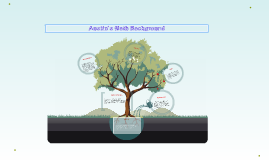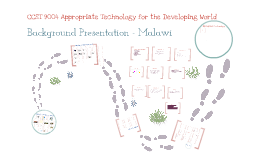Math Presentation
Transcript: Builds confidence in abilities Real world connections Reason, communicate ideas, make connections and apply knowledge and skills Assessing student understanding Promotes collaboration Fosters critical thinking Math intimidation – number phobia or fear of abstract concepts Ineffective teachers establish zero confidence High stress during timed exams Sibling competition Bad school experiences? Place emphasis on process, not product Give encouragement Actively involve students in the learning process so they can develop their own meanings for math ideas and concepts Cooperative learning, student discussions, concrete materials, learning journals all encourage interaction, foster cognitive growth, self-esteem Make abstract concepts realistic through models, hands-on materials, etc. then transition from concrete to pictorial/diagrammatic to symbolic representation to abstract formula/equation/proof Technology and mathematic computer programs help conceptual understanding and simulate real-world applications and modeling Representation Workshops Retreats Conferences Courses (institutional) Other training Problem Solving Reasoning Communicating Better understanding of how students think and learn Further knowledge, skills and abilities Professional connections Links to resources Math Anxiety Methods and Approaches Math Anxiety Equipping students for the future Math Anxiety Collecting data Makes sense of math Fosters critical thinking Inductive reasoning Disprove conjectures Assess validity of concepts and proofs resource centers with the latest materials/technology advice counseling from professionals and/or peers universities/institutions/governments Private sector (may donate equipment) Community resources (skilled parents) Secondary Curriculum http://www.edu.gov.on.ca/eng/curriculum/secondary/math.html Elementary Curriculum http://www.edu.gov.on.ca/eng/curriculum/elementary/math.html Teaching Secondary Mathematics (text) Leading Math Success http://www.edu.gov.on.ca/eng/studentsuccess/lms/library.html National Council of Teachers of Mathematics http://www.nctm.org/ Ontario Association for Mathematics Education http://www.oame.on.ca/main/index1.php?lang=en&code=home Education Quality and Accountability Office (EQAO) http://www.eqao.com/NR/ReleaseViewer.aspx?Lang=E&release=b12R006 EQAO Test Results Benefits of Professional Development Traditional Approach: drills, memorization, repeated computations, etc. Non-traditional Approach: investigation, collaboration, constructive methods, etc. Which method do you prefer? When can one method prevail over the other? How can you balance both approaches? Purpose: To help students develop a deeper understanding. Graphing Calculators Computers (e.g., Fathom, Geometer’s Sketchpad) Internet Manipulatives Mental computation Estimation Statistics Reasoning and Proving References Universal Language 7 Learning Styles Does my answer make sense? Evaluate their strategy Rethink problems Develop problem solving skills Improve ability to make sense of problems Geometry Probability Calculus Organization As a mathematics teacher, how could you accommodate students who require additional mathematics support so they can reach their full potential? How can we, as high school mathematics teachers, specifically encourage minorities to pursue further mathematics study or related fields? Describe how you, as a mathematics teacher, can empower students and equip them for tomorrow’s world. How can a mathematics curriculum support high expectations for all students? Derivatives Description Concrete Numeric Graphical Algebraic Pictoral Animations Expressing mathematical ideas and understandings properly and effectively Orally Visually Written Notation, symbols Demonstrates a thorough understanding Must be well organized, regularly scheduled, carefully designed to enrich, augment, improve mathematical and teaching skills, knowledge and abilities Must include mathematical content, appropriate teaching methodologies, active participation of teachers, understanding of daily problems, teaching routines and classroom situations, both theoretical and practical applications, statement of goals and objectives, chance to practice new skills and methods and ongoing support and supplementary activities Selecting Tools and Computational Strategies A Harsh Reality Visual (spatial) Aural (auditory-musical) Verbal (linguistic) Physical (kinesthetic) Logical (mathematical) Social (interpersonal) Solitary (intrapersonal) Recognize this phenomenon among students Which specific cause? How can we, as math teachers, address this problem? Graphs Resources Reflecting Proofs Representing Slope Why is math important? Building confidence Effective Professional Development Applications to real world problems Think ‘outside the box’ Understand the relevance of mathematical concepts Finding various approaches to problems Teacher shortage Inadequate teacher training Teachers avoiding teaching the subject Socio-economic factors

















